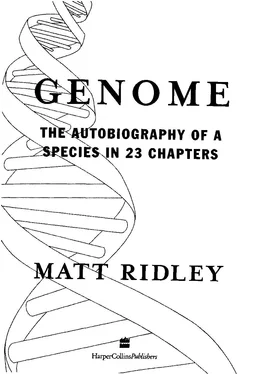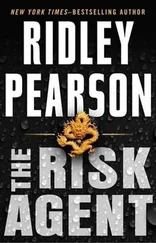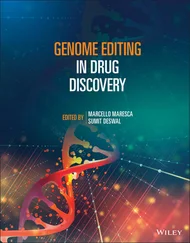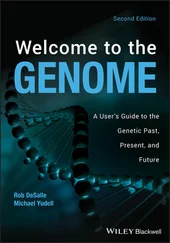Genome - Matt Ridley
Здесь есть возможность читать онлайн «Genome - Matt Ridley» — ознакомительный отрывок электронной книги совершенно бесплатно, а после прочтения отрывка купить полную версию. В некоторых случаях можно слушать аудио, скачать через торрент в формате fb2 и присутствует краткое содержание. Жанр: Старинная литература, на английском языке. Описание произведения, (предисловие) а так же отзывы посетителей доступны на портале библиотеки ЛибКат.
- Название:Matt Ridley
- Автор:
- Жанр:
- Год:неизвестен
- ISBN:нет данных
- Рейтинг книги:5 / 5. Голосов: 1
-
Избранное:Добавить в избранное
- Отзывы:
-
Ваша оценка:
- 100
- 1
- 2
- 3
- 4
- 5
Matt Ridley: краткое содержание, описание и аннотация
Предлагаем к чтению аннотацию, описание, краткое содержание или предисловие (зависит от того, что написал сам автор книги «Matt Ridley»). Если вы не нашли необходимую информацию о книге — напишите в комментариях, мы постараемся отыскать её.
Matt Ridley — читать онлайн ознакомительный отрывок
Ниже представлен текст книги, разбитый по страницам. Система сохранения места последней прочитанной страницы, позволяет с удобством читать онлайн бесплатно книгу «Matt Ridley», без необходимости каждый раз заново искать на чём Вы остановились. Поставьте закладку, и сможете в любой момент перейти на страницу, на которой закончили чтение.
Интервал:
Закладка:
The human brain is a far more impressive machine than the genome. If you like quantitative measures, it has trillions of synapses instead of billions of bases and it weighs kilograms instead of micro-grams. If you prefer geometry, it is an analogue, three-dimensional 2 3 0 G E N O M E
machine, rather than a digital, one-dimensional one. If you like thermodynamics, it generates large quantities of heat as it works, like a steam engine. For biochemists, it requires many thousands of different proteins, neurotransmitters and other chemicals, not just the four nucleotides of D N A . For the impatient, it literally changes while you watch, as synapses are altered to create learned memories, whereas the genome changes more slowly than a glacier. For the lover of free will, the pruning of the neural networks in our brains, by the ruthless gardener called experience, is vital to the proper functioning of the organ, whereas genomes play out their messages in a predetermined way with comparatively little flexibility. In every way, it seems, conscious, willed life has advantages over automatic, gene-determined life. Yet, as James Mark Baldwin realised and modern Artificial-Intelligence nerds appreciate, the dichotomy is a false one. The brain is created by genes. It is only as good as its innate design. The very fact that it is a machine designed to be modified by experience is written in the genes. The mystery of how is one of the great challenges of modern biology. But that the human brain is the finest monument to the capacities of genes there is no doubt. It is the mark of a great leader that he knows when to delegate. The genome knew when to delegate.
C
H
R
O
M
O
S
O
M
E 1 7
D e a t h
Dulce et decorum est pro patria mori
Horace
The old lie
Wilfred Owen
If learning is making new connections between brain cells, it is also about losing old connections. The brain is born with far too many connections between cells; many are lost as it develops. For example, at first each side of the visual cortex is connected to one half of the input from both eyes. Only by fairly drastic pruning does this change so that one slice of the brain receives input from the right eye and another slice receives input from the left eye. Experience causes the unnecessary connections to wither away and thereby turns the brain from a general to a specific device. Like a sculptor chipping away at a block of marble to find the human form within, so the environment strips away the surplus neurons to sharpen the skills of the brain. In a blind, or permanently blindfolded young mammal, this sorting out never happens.
But the withering means more than the loss of synaptic connections. It also means the death of whole cells. A mouse with a faulty version of a gene called ced-9 fails to develop properly because cells 2 3 2 G E N O M E
in its brain that are not needed fail to do their duty and die. The mouse ends up with a disorganised and overloaded brain that does not work. Folk wisdom loves to recite the grim (but meaningless) statistic that we lose a million brain cells a day. In our youth, and even in the womb, we do indeed lose brain cells at a rapid rate. If we did not, we would never be able to think at all.1
Prodded by genes like ced-9, the unneeded cells commit mass suicide (other ced genes cause suicide in other body tissues). The dying cells obediently follow a precise protocol. In microscopic nematode worms, the growing embryo eventually contains 1,090
cells, but precisely 131 of these kill themselves during development, leaving 959 cells in an adult worm. It is as if they sacrifice themselves for the greater good of the body. 'Dulce et decorum est pro corpore mori''
they cry and fade heroically away, like soldiers going over the top at Verdun, or worker bees suicidally stinging an intruder. The analogy is far from specious. The relationship between body cells is indeed very much like that between bees in a hive. The ancestors of your cells were once individual entities and their evolutionary 'decision'
to co-operate, some 600 million years ago, is almost exactly equivalent to the same decision, taken perhaps fifty million years ago by the social insects, to co-operate on the level of the body: close genetic relatives discovered they could reproduce more effectively if they did so vicariously, delegating the task to germ cells in the cells' case, or to a queen in the case of bees.2
The analogy is so good that evolutionary biologists have begun to realise that the co-operative spirit goes only so far. Just as soldiers at Verdun were occasionally driven to mutiny against the greater good, so worker bees are capable of reproducing on their own if they get the chance; only the vigilance of other workers prevents them. The queen buys the loyalty of those other workers to herself rather than to their sister workers by mating with several males to ensure that most workers are only half-sisters of each other and therefore share little genetic common interest. And so it is with cells in the body. Mutiny is a perpetual problem. Cells are continually forgetting their patriotic duty, which is to serve the germ cells, and D E A T H 233
setting out to reproduce themselves. After all, each cell is descended from a long line of reproducing cells; it goes against the grain to cease dividing for a whole generation. And so, in every tissue every day, there is a cell that breaks ranks and starts to divide again, as if unable to resist the age-old call of the genes to reproduce themselves.
If the cell cannot be stopped, we call the result cancer.
But usually, it can be stopped. The problem of cancerous mutiny is so old that in all large bodied animals the cells are equipped with an elaborate series of switches designed to induce the cell to commit suicide if it should find itself turning cancerous. The most famous and important of these switches, in fact possibly the most talked about of all human genes since its discovery in 1979, is TP53, which lies on the short arm of chromosome 17. This chapter tells the remarkable story of cancer, through the eyes of a gene whose principal job is to prevent it.
When Richard Nixon declared war on cancer in 1971, scientists did not even know what the enemy was, beyond the obvious fact that it was an excessive growth of tissue. Most cancer was plainly neither infectious nor inherited. The conventional wisdom was that cancer was not a single form of disease at all, but a collection of diverse disorders induced by a multiplicity of causes, most of them external. Chimney sweeps 'caught' scrotal cancer from coal tar; X-ray technicians and Hiroshima survivors contracted leukaemia from radiation; smokers 'caught' lung cancer from cigarette smoke and shipyard workers 'caught' the same affliction from asbestos fibres.
There might be no common thread, but if there was it probably involved a failure of the immune system to suppress tumours. So went the conventional wisdom.
Two rival lines of research were, however, beginning to produce new insights that would lead to a revolution in the understanding of cancer. The first was the discovery in the 1960s by Bruce Ames in California that many chemicals and radiations that caused cancer, such as coal tar and X-rays, had one crucial thing in common: they were very good at damaging D N A . Ames glimpsed the possibility that cancer was a disease of the genes.
2 3 4 G E N O M E
The second breakthrough had begun much earlier. In 1909, Peyton Rous had proved that a chicken with a form of cancer called sarcoma could pass the disease to a healthy chicken. His work was largely ignored, since there seemed so little evidence that cancer was contagious. But in the 1960s, a whole string of animal cancer viruses, or oncoviruses, were discovered, beginning with the Rous sarcoma virus itself. Rous was eventually given the Nobel prize at the age of eighty-six in recognition of his prescience. Human oncoviruses soon followed and it became apparent that whole classes of cancer, such as cervical cancer, were indeed caused partly by viral infection.
Читать дальшеИнтервал:
Закладка:
Похожие книги на «Matt Ridley»
Представляем Вашему вниманию похожие книги на «Matt Ridley» списком для выбора. Мы отобрали схожую по названию и смыслу литературу в надежде предоставить читателям больше вариантов отыскать новые, интересные, ещё непрочитанные произведения.
Обсуждение, отзывы о книге «Matt Ridley» и просто собственные мнения читателей. Оставьте ваши комментарии, напишите, что Вы думаете о произведении, его смысле или главных героях. Укажите что конкретно понравилось, а что нет, и почему Вы так считаете.












